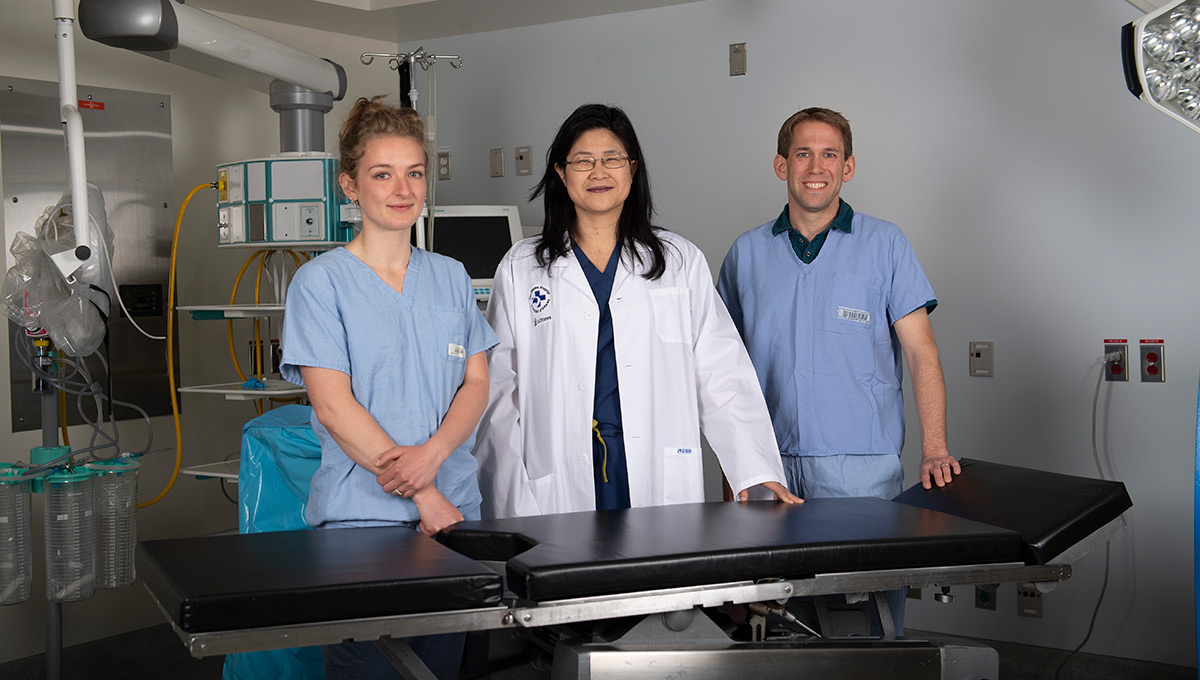 PhD student Annemarie Dedek (left), Dr. Eve Tsai (middle) and Dr. Mike Hildebrand (right) are studying a vicious pain feedback loop that may be a root cause of many human chronic pain conditions.Carleton University’s Dr. Mike Hildebrand and his partners, including Dr. Eve Tsai of The Ottawa Hospital and the University of Ottawa, are publishing new research into managing chronic pain. The lack of effective treatments has created a major health crisis affecting one in five Canadians.
PhD student Annemarie Dedek (left), Dr. Eve Tsai (middle) and Dr. Mike Hildebrand (right) are studying a vicious pain feedback loop that may be a root cause of many human chronic pain conditions.Carleton University’s Dr. Mike Hildebrand and his partners, including Dr. Eve Tsai of The Ottawa Hospital and the University of Ottawa, are publishing new research into managing chronic pain. The lack of effective treatments has created a major health crisis affecting one in five Canadians.
The opioid epidemic has highlighted the magnitude of this clinical problem, as well as the urgent need for safer more effective treatments.
“To develop new pharmacological options, pain researchers are investigating what goes wrong to drive out-of-control pain signalling,” said Dr. Hildebrand, professor in the Department of Neuroscience.
Most pain studies use rodent models of human chronic pain conditions, such as sciatica, neuropathies and arthritis. Once targets and candidate compounds are identified and shown to be safe, they advance to human testing. Until recently, a major gap in this development process was determining whether the pathological mechanisms and pain targets that are identified using rodent models are involved in chronic pain signalling in humans.
A collaboration between Dr. Hildebrand’s pain research lab at Carleton, neurosurgeon researcher Dr. Eve Tsai at The Ottawa Hospital and the University of Ottawa, and researchers at Yale University and Laval University is tackling this pain translation problem. The team recently published their first findings in the neurology journal Brain. Through Dr. Tsai’s unique access to viable spinal cord tissue from human organ donors (enabled by the selfless act of the organ donors and their families), the researchers were able to develop a human spinal tissue model of chronic pain signalling.
This new model includes the first-ever recording of synaptic pain signals from human spinal neurons that have been kept alive. It also uses biochemical techniques to measure changes in synaptic proteins. By comparing results between rodent pain models and this human spinal cord tissue model, the researchers have identified a new molecular mechanism of out-of-control pain signalling that is consistent between rodents and humans.
This vicious pain feedback loop may be a root cause of many human chronic pain conditions and includes new potential molecular targets for future pharmacological development.
“Our human spinal cord research program is crucial not only for chronic pain research, but also for studies on brain and spinal cord regeneration,” said Dr. Tsai. “We’re uniquely positioned at The Ottawa Hospital to translate these discoveries into promising new treatments.”
Media Contact
Steven Reid
Media Relations Officer
Carleton University
613-520-2600, ext. 8718
613-265-6613
Steven_Reid3@Carleton.ca
